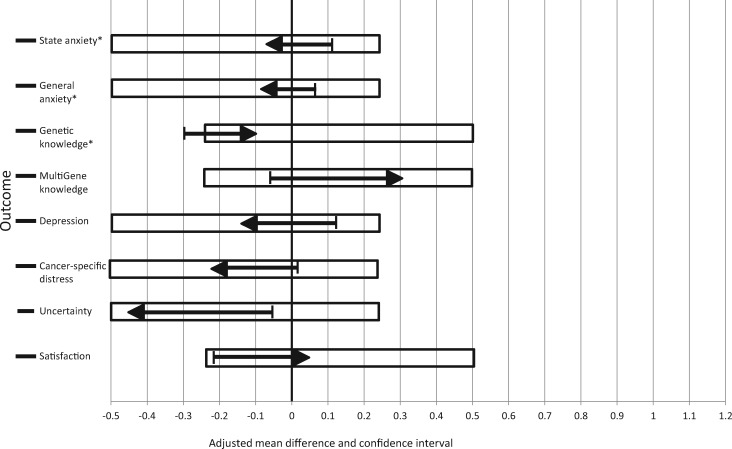Figure 2.
Noninferiority analyses comparing telephone to usual care in-person disclosure of genetic test results. *Primary postdisclosure outcomes. Black arrows depict the 98.3% confidence interval (one-sided) for primary outcomes/95% confidence interval (one-sided) for all other outcomes. The blocked area indicates the noninferiority range. If the confidence intervals completely fall within the noninferiority range, then noninferiority can be concluded. The arrows indicate the direction in which the effect would show that telephone disclosure is more favorable than in-person disclosure. For example, more negative average change scores (ie, less than 0) in state anxiety between arms would indicate that telephone disclosure decreased state anxiety more than in-person disclosure. Similarly, more positive average change scores (ie, greater than 0) in knowledge would indicate that telephone disclosure increased knowledge more than in-person disclosure. With imputed data, the estimated effects (one-sided CI) were state anxiety –0.04 (0.09), general anxiety –0.08 (0.05), and genetic knowledge –0.07 (–0.24), which were all within the noninferiority range.

